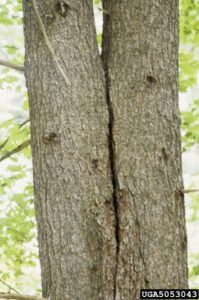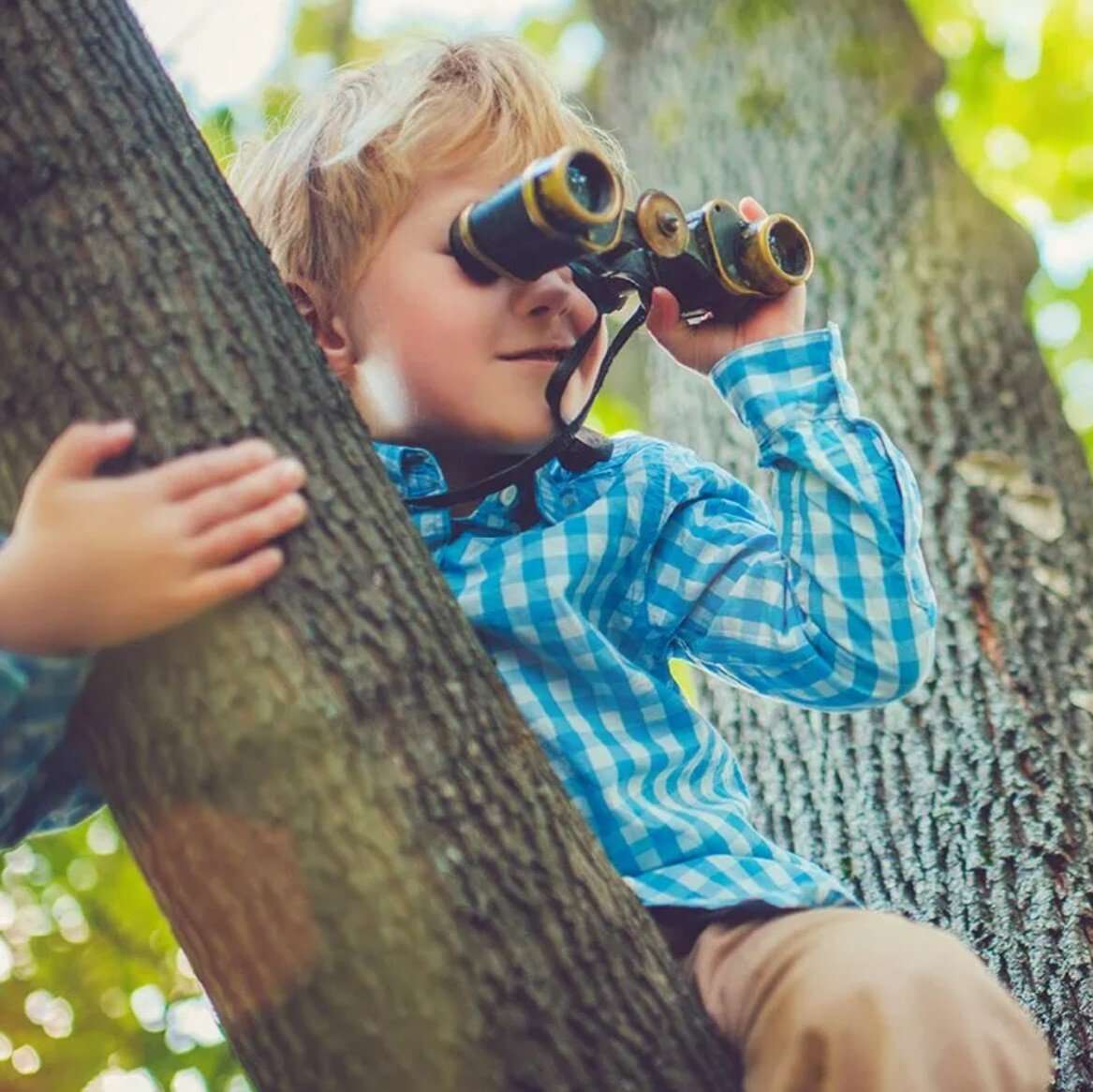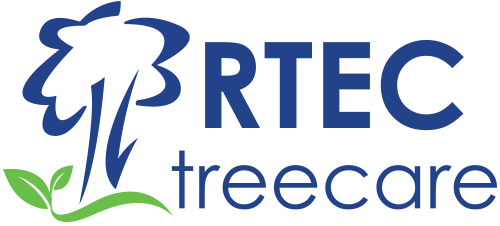TREE CABLING

Strengthen and Support Trees for Safety and Longevity
Weak branches are a problem for homeowners and tree lovers alike. Not only can they be unsightly, but they can endanger you or your family in an extreme weather event. When that’s the case, you need to consider tree cabling.
What is Tree Cabling?
Tree cabling uses extra high strength cables to hold a tree branch in place. This process helps create support systems for weak branches, and it can guide a tree’s growth in the right direction.
It uses cables to stabilize a tree’s physical structure in cases where the tree can no longer support its own weight. Cabling cannot be used to keep unhealthy, dying trees from falling apart. Instead, it’s used to assist healthy but oddly shaped or slightly injured trees maintain their structural integrity during heavy winds or storms.’
When you cable a tree, you can avoid long-term problems like inefficient growth and dangerously weak branches. Tree cabling is a common solution that can help many homeowners and keep them and their trees safe in the long-run.
Reasons for Cabling Trees:
If caught early, structural issues can usually be solved through strategic pruning. However, after a tree is mature most structural issues will require tree cabling or bracing.
Prevention: Support systems are used in prevention when a healthy tree has some structural issues that are spotted during a routine inspection. Installing a support system in these scenarios reduces the chance of the structural issues causing damage to people or property.
Restoration: Support systems are used for restoration when a tree has been damaged by a storm, construction work, or extreme temperatures. By cabling in this situation, you can maintain what’s left of the healthy structure of the tree and protect it from future damage.
Mitigation: Support systems are used to mitigate risks in healthy trees without structural issues that are in areas where considerable damage to people or property could occur if the tree was to fall unexpectedly.
NEED ASSISTANCE? WE ARE HERE TO HELP
When Should You Cable a Tree?
There are a couple of different reasons you may want to cable a tree. Here are some common reasons:
- You are trying to train your tree to grow in a certain direction
- There is a split or crack in your tree
- You have a weak branch due to co-dominant stems
Trees will grow toward the sunlight. But sometimes the available light will lead a tree into situations that are compromising for you. If a tree seems to be growing too close to your home or over your driveway, you may want to consider cabling.
With the help of cables, you can convince young trees to grow in more favorable directions. This is one of the best ways to correct inconvenient tree structures.
Additionally, you may have a weak branch due to an extreme weather event or co-dominant stems. Co-dominant stems occur when branches of equal size emerge from the same origin point. As the tree grows, one of these branches will often become weaker and weigh on the rest of the tree.
Many people prefer to avoid this issue by pruning when the tree is young. But if you weren’t able to do this, tree cabling is the answer to your problem.
Signs You Need Tree Cabling:
Tree Cracks: Cracking or splitting in the trunk of your tree is a sign of a potentially serious structural issue, and may require a support system. If you notice a crack call an arborist to check it out.

V-Crotch/Co-Dominate Stems: Co-dominant stems are two or more stems that grow upward from a single point of origin. They usually create the image of a “V”, hence the name V-Crotch. As the tree’s branches grow, V-Crotches become weak spots in the tree. V-crotches are likely to split and cause the tree to fall.


Leaning Tree: Trees normally have a little lean to them. A tree trunk curves because of the tree’s ability to adapt over time to the changing availability of sunlight. The tree’s root system will grow to accommodate this off-center weight distribution. However, if a tree suddenly begins to lean, starts leaning after a storm, or if the soil around the tree is cracked/heaving your tree may have a structural issue that requires tree cabling.

How Do You Cable A Tree?
Tree cabling requires strong bolts, cables, and brace wire stops.
- Dynamic Cabling System allows for movement, flexibility, and controls the branches from splitting. A properly installed cabling system should not be highly visible but should blend in with the tree’s trunk and branches.
- Other Cabling Systems: Depending on the species and condition of the tree, other systems may be recommended such as steel or rod tree bracing. Our Certified Arborists can recommend the system that works best for your trees.
First, you will have to decide where to drill holes in your tree. Your tree will heal from these holes, but you don’t want to drill more than necessary.
Then, you climb into the tree, drill the holes and insert the cable. The cable should be very tight so as to properly support the tree.
While it may seem possible to do this yourself, it is not as simple as it looks. Properly placing the cables in order to most efficiently correct the growth of a tree often requires an expert eye.
Additionally, climbing ladders and trees pose certain safety risks to someone not used to this kind of tree maintenance. The best option is usually to call Certified Arborists to help you.
Cable Your Weak Branch Today
If you have a weak branch or other tree growth problem, tree cabling may be the answer you’ve been looking for. To get started, call us at 703.573.3029 or book an appointment online today.
Our team of Certified Arborists and tree service experts will help you determine the best plan for ensuring safe and healthy trees.
Already Have A Cabling System?
For the safety of your tree, it’s important to have your system inspected yearly by a Certified Arborist to make sure the system is intact and safe. Throughout the year, be sure to keep an eye out for these warning signs.

Cable Your Weak Branch Today
If you have a weak branch or other tree growth problem, tree cabling may be the answer you’ve been looking for. To get started, call us at 703.573.3029 or book an appointment online today.
Our team of Certified Arborists and tree service experts will help you determine the best plan for ensuring safe and healthy trees.
Already Have A Cabling System?
For the safety of your tree, it’s important to have your system inspected yearly by a Certified Arborist to make sure the system is intact and safe. Throughout the year, be sure to keep an eye out for these warning signs.
Warning Signs Include:
- Broken or hanging limbs
- Slack in the cabling
- Fraying on the cables
- Animal nests near the cabling system (especially squirrels)
Book an appointment online or call (703) 573-3029 to get your free tree cabling estimate.-

About RTEC Tree Care
WE ARE:
- Environmental Advocates
- Accredited by the Tree Care Industry Association
- Science based
- Certified Arborists
